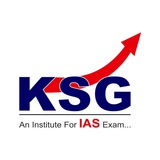Today's Headlines - 02 September 2023
Chandrayaan-3 confirms Sulphur in lunar surface
GS Paper - 3 (Space Technology)
The Indian Space Research Organisation (ISRO) said the Pragyan rover's Laser-Induced Breakdown Spectroscope confirmed the presence of sulphur in the lunar surface near the south pole, through the first-ever in-situ measurements. Pragyan is a lunar rover that forms part of Chandrayaan-3, the lunar mission developed by ISRO.
More about discovery
The Laser-Induced Breakdown Spectroscopy (LIBS) instrument onboard Chandrayaan-3 Rover has made the first-ever in-situ measurements on the elemental composition of the lunar surface near the South Pole.
These in-situ measurements confirm the presence of sulphur (S) in the region unambiguously, something that was not feasible by the instruments onboard the orbiters.
LIBS is a scientific technique that analyses the composition of materials by exposing them to intense laser pulses.
A high-energy laser pulse is focused onto the surface of a material, such as a rock or soil. The laser pulse generates extremely hot and localised plasma.
The collected plasma light is spectrally resolved and detected by detectors such as Charge Coupled Devices. Since each element emits a characteristic set of wavelengths of light when it is in a plasma state, the elemental composition of the material is determined.
Chandrayaan-3 successfully executed a soft landing on the moon on 23 August 2023, making India the fourth nation in the world to achieve a successful lunar landing.
India also marked a milestone by becoming the first country to land near the South Pole, an area believed to harbour significant amounts of water ice.
ISRO on 29 August 2023 said preliminary analyses, graphically represented, have unveiled the presence of aluminium (Al), sulphur (S), calcium (Ca), iron (Fe), chromium (Cr), and titanium (Ti) on the lunar surface.
Further measurements have revealed the presence of manganese (Mn), silicon (Si), and oxygen (O). A thorough investigation regarding the presence of hydrogen is underway.
Flashback
The LIBS instrument is developed at the Laboratory for Electro-Optics Systems (LEOS) / ISRO, Bengaluru.
LEOS, situated at Peenya Industrial Estate, Bengaluru, is one of the vital units of ISRO.
It deals with the design, development, and production of attitude sensors for all low Earth orbit (LEO), geostationary Earth orbit (GEO) and interplanetary missions.
It develops and delivers optical systems for remote sensing and meteorological payloads.
#upsc #news #headline #chandryaan #sulphur #lunar #surface #spacetechnology #ISRO #pragyan #laser #spectroscope #southpole #situ #measurment #rover #LIBS #elemental #composition #scientific #technique #materials #laserpulse #rock #soil #plasma #wavelengths #light #chargedevices #softlanding #milestone #waterice #aluminium #calcium #iron #chromium #titanium #silicon #oxygen #manganese #hydrogen #LEOS #GEO #peenya
Chandrayaan-3 confirms Sulphur in lunar surface
GS Paper - 3 (Space Technology)
The Indian Space Research Organisation (ISRO) said the Pragyan rover's Laser-Induced Breakdown Spectroscope confirmed the presence of sulphur in the lunar surface near the south pole, through the first-ever in-situ measurements. Pragyan is a lunar rover that forms part of Chandrayaan-3, the lunar mission developed by ISRO.
More about discovery
The Laser-Induced Breakdown Spectroscopy (LIBS) instrument onboard Chandrayaan-3 Rover has made the first-ever in-situ measurements on the elemental composition of the lunar surface near the South Pole.
These in-situ measurements confirm the presence of sulphur (S) in the region unambiguously, something that was not feasible by the instruments onboard the orbiters.
LIBS is a scientific technique that analyses the composition of materials by exposing them to intense laser pulses.
A high-energy laser pulse is focused onto the surface of a material, such as a rock or soil. The laser pulse generates extremely hot and localised plasma.
The collected plasma light is spectrally resolved and detected by detectors such as Charge Coupled Devices. Since each element emits a characteristic set of wavelengths of light when it is in a plasma state, the elemental composition of the material is determined.
Chandrayaan-3 successfully executed a soft landing on the moon on 23 August 2023, making India the fourth nation in the world to achieve a successful lunar landing.
India also marked a milestone by becoming the first country to land near the South Pole, an area believed to harbour significant amounts of water ice.
ISRO on 29 August 2023 said preliminary analyses, graphically represented, have unveiled the presence of aluminium (Al), sulphur (S), calcium (Ca), iron (Fe), chromium (Cr), and titanium (Ti) on the lunar surface.
Further measurements have revealed the presence of manganese (Mn), silicon (Si), and oxygen (O). A thorough investigation regarding the presence of hydrogen is underway.
Flashback
The LIBS instrument is developed at the Laboratory for Electro-Optics Systems (LEOS) / ISRO, Bengaluru.
LEOS, situated at Peenya Industrial Estate, Bengaluru, is one of the vital units of ISRO.
It deals with the design, development, and production of attitude sensors for all low Earth orbit (LEO), geostationary Earth orbit (GEO) and interplanetary missions.
It develops and delivers optical systems for remote sensing and meteorological payloads.
#upsc #news #headline #chandryaan #sulphur #lunar #surface #spacetechnology #ISRO #pragyan #laser #spectroscope #southpole #situ #measurment #rover #LIBS #elemental #composition #scientific #technique #materials #laserpulse #rock #soil #plasma #wavelengths #light #chargedevices #softlanding #milestone #waterice #aluminium #calcium #iron #chromium #titanium #silicon #oxygen #manganese #hydrogen #LEOS #GEO #peenya
